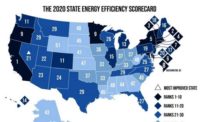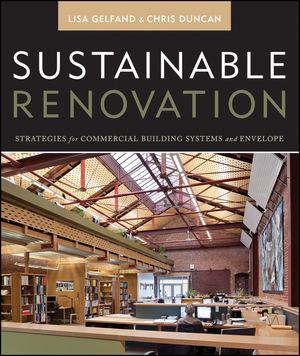Minnesota State Officials Share How Efforts Toward Commercial Energy Efficiency Could Set Blueprint for U.S.
.png?1727443302)
Steve Shold from the Minnesota Department of Labor and Industry.
Those participating in the Fenestration and Glazing Industry Alliance (FGIA) 2024 Fall Conference, held in Minneapolis, heard the ways in which the state of Minnesota is leading the nation when it comes to commercial energy codes and efficiency as well as efforts to mitigate the impact of per- and polyfluoroalkyl substances (PFAS) on the environment and local drinking water supply. Both subject matter experts shared what those operating in other states may be able to expect to see in their own jurisdictions down the road.
Commercial Energy Codes in Minnesota
In his session entitled "What Do We Need to Know When It Comes to New Commercial Energy Codes in Minnesota?,” Steve Shold from the Minnesota Department of Labor and Industry shared changes from the 2020 Minnesota commercial energy code to the new 2024 edition. “Prior to 2024, there were two paths under the 2020 Minnesota energy code, but you could not mix and match between International Energy Conservation Code (IECC) and the American Society of Heating, Refrigerating and Air-Conditioning Engineers (ASHRAE),” he explained. However, since both were included in the same book, “it was a little bit confusing.” As of January 5, 2024, the IECC path went away.
The scope has changed for historic buildings. Now, all must comply with Minnesota Rules 1323 as an option, including residential buildings of less than three stories. Another change is the revised climate zone map. “Building envelope criteria has changed along with those climate zones,” said Shold. “The building envelope is required to be more efficient than before so check out those efficiency updates and upgrades.”
While Minnesota building codes have been on a six-year cycle historically, commercial and residential energy codes are now on a three-year cycle, matching the timeframe of national code adoption. “In Minnesota, the commercial energy code in effect in 2036 will need to achieve 80% reduction in annual net energy consumption or greater, using ASHRAE as a baseline,” said Shold.
Preventing "Forever Chemical" Pollution in Minnesota
Dana Vanderbosch and Kirk Koudelka from the Minnesota Pollution Control Agency presented "Preventing “Forever Chemical” Pollution in Minnesota," sharing how the state has investigated the existence of PFAS in the environment and what the agency has done to address it.
“PFAS pose a challenge and a risk to public health. It's present in thousands of everyday products,” said Vanderbosch. “Even very small amounts can be harmful because of the way they can build up in people over time.” PFAS are very difficult to remove, explained Vanderbosch. That is why they have earned the title of "forever chemicals." “These chemicals go everywhere and don't break down,” she said.
Minnesota has been working on this project since 2002. In 2021, the agency consolidated their "lessons learned" on PFAS and developed a comprehensive strategy to tackle it. The state manages what PFAS are already in the system through regulatory controls and reduction efforts. They attack PFAS pollution at contaminated sites, and they implemented a monitoring plan for the future in 2023. Minnesota was able to fund PFAS remediation due to a settlement with 3M, and the agency encourages other cities in the country to take similar legal action to protect drinking water.
“Prioritizing prevention is the most effective way to protect human health, the environment and the economy,” said Koudelka. “Laws passed in 2023 made Minnesota a national leader.” Koudelka’s advice to companies was to begin having conversations now with suppliers. “It’s important to examine your supply chain,” he said.
For more information about FGIA and its activities, visit FGIAonline.org.
Looking for a reprint of this article?
From high-res PDFs to custom plaques, order your copy today!






